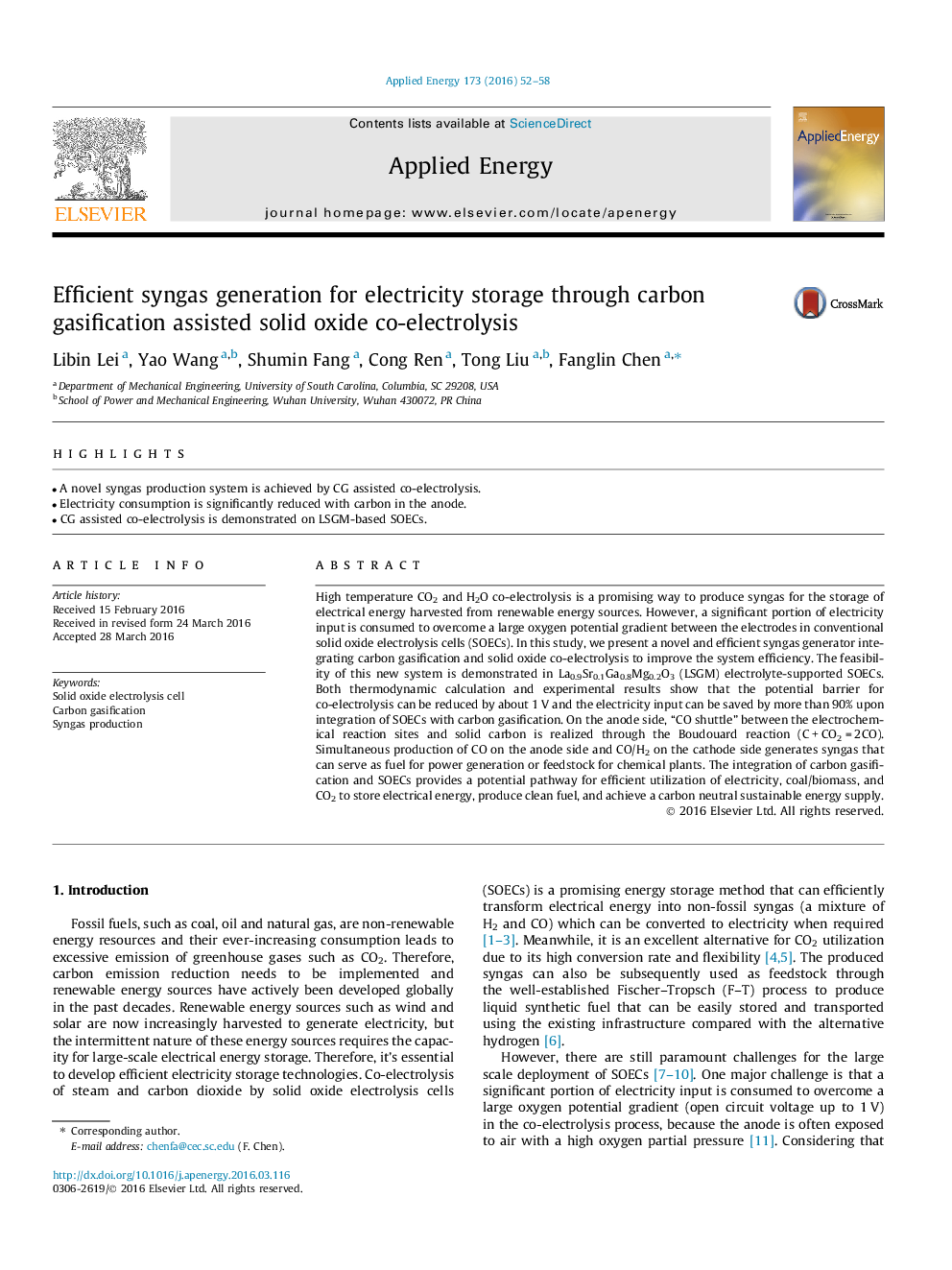| Article ID | Journal | Published Year | Pages | File Type |
|---|---|---|---|---|
| 6683083 | Applied Energy | 2016 | 7 Pages |
Abstract
High temperature CO2 and H2O co-electrolysis is a promising way to produce syngas for the storage of electrical energy harvested from renewable energy sources. However, a significant portion of electricity input is consumed to overcome a large oxygen potential gradient between the electrodes in conventional solid oxide electrolysis cells (SOECs). In this study, we present a novel and efficient syngas generator integrating carbon gasification and solid oxide co-electrolysis to improve the system efficiency. The feasibility of this new system is demonstrated in La0.9Sr0.1Ga0.8Mg0.2O3 (LSGM) electrolyte-supported SOECs. Both thermodynamic calculation and experimental results show that the potential barrier for co-electrolysis can be reduced by about 1Â V and the electricity input can be saved by more than 90% upon integration of SOECs with carbon gasification. On the anode side, “CO shuttle” between the electrochemical reaction sites and solid carbon is realized through the Boudouard reaction (CÂ +Â CO2Â =Â 2CO). Simultaneous production of CO on the anode side and CO/H2 on the cathode side generates syngas that can serve as fuel for power generation or feedstock for chemical plants. The integration of carbon gasification and SOECs provides a potential pathway for efficient utilization of electricity, coal/biomass, and CO2 to store electrical energy, produce clean fuel, and achieve a carbon neutral sustainable energy supply.
Related Topics
Physical Sciences and Engineering
Energy
Energy Engineering and Power Technology
Authors
Libin Lei, Yao Wang, Shumin Fang, Cong Ren, Tong Liu, Fanglin Chen,
